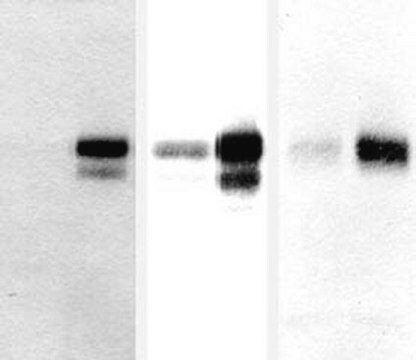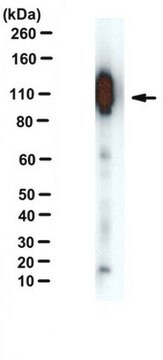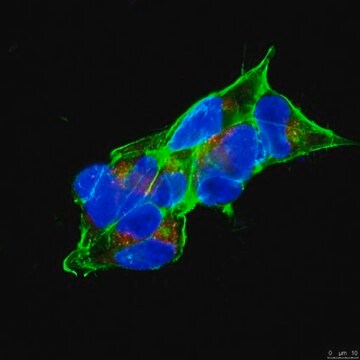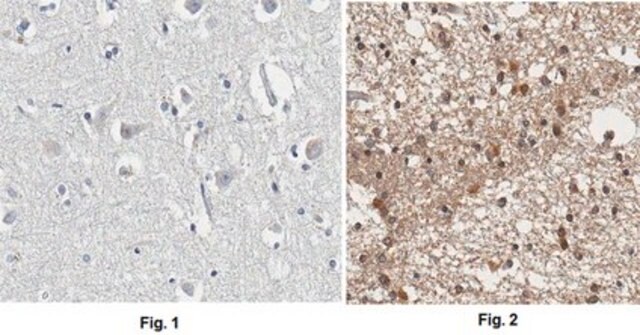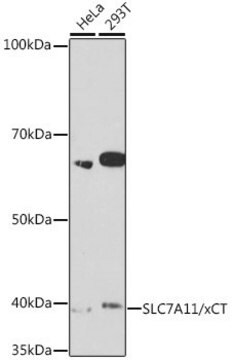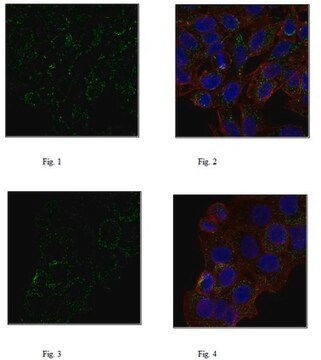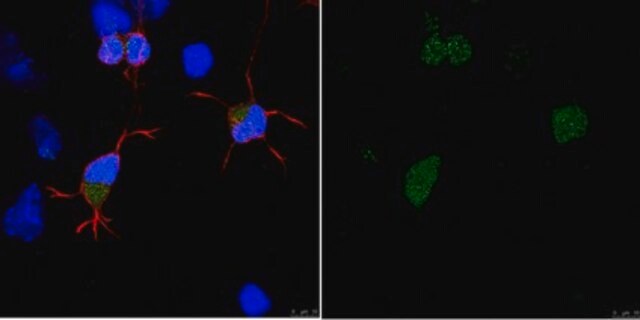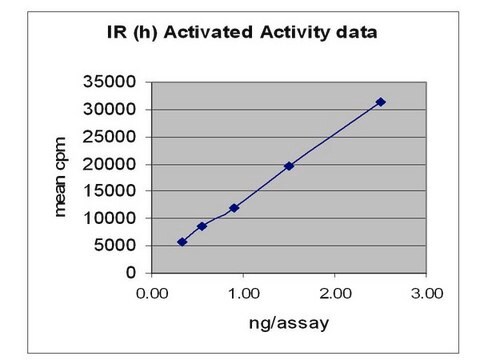MABN2287
Anti-APP Antibody, clone 1D1
clone 1D1, from rat
Sinônimo(s):
Amyloid beta A4 protein, ABPP, APPI, Alzheimer disease amyloid protein, Amyloid precursor protein, Beta-amyloid precursor protein, Cerebral vascular amyloid peptide, CVAP, PreA4, Protease nexin-II, PN-II
About This Item
Produtos recomendados
fonte biológica
rat
Nível de qualidade
forma do anticorpo
purified immunoglobulin
tipo de produto de anticorpo
primary antibodies
clone
1D1, monoclonal
reatividade de espécies
human
técnica(s)
ELISA: suitable
flow cytometry: suitable
immunocytochemistry: suitable
immunohistochemistry: suitable (paraffin)
western blot: suitable
Isotipo
IgG1κ
nº de adesão NCBI
nº de adesão UniProt
Condições de expedição
ambient
modificação pós-traducional do alvo
unmodified
Informações sobre genes
human ... APP(351)
Categorias relacionadas
Descrição geral
Especificidade
Imunogênio
Aplicação
Immunoprecipitation Analysis: A representative lot detected APP in Immunoprecipitation applications (Hofling, C., et. al. (2016). Aging Cell. 15(5):953-63).
Western Blotting Analysis: A representative lot detected APP in WT, but not in APP knockdown HEK293T cells (Courtesy of Dr. med. Peer-Hendrik Kuhn, Ph.D., Institut fur Allgemeine Pathologie und Pathologische Anatomie, Technische Universität München, Munich, Germany).
Immunocytochemistry Analysis: A 1:250 dilution from a representative lot detected APP in HEK293 cell line.
Immunocytochemistry Analysis: A representative lot detected APP in Immunocytochemistry applications (Hofling, C., et. al. (2016). Aging Cell. 15(5):953-63).
Immunocytochemistry Analysis: A 1:10 dilution from a representative lot detected APP in HEK293T cells, but not in cells lentivirally transduced with APP shRNA-1 or APP shRNA-2, both coexpressing GFP as a reporter (Courtesy of Dr. med. Peer-Hendrik Kuhn, Ph.D., Institut fur Allgemeine Pathologie und Pathologische Anatomie, Technische Universität München, Munich, Germany).
Immunohistochemistry Analysis: A representative lot detected APP in Immunohistochemistry applications (Hofling, C., et. al. (2016). Aging Cell. 15(5):953-63).
Immunohistochemistry Analysis: A 1:50 dilution from a representative lot detected APP in human cerebral cortex and human Alzheimer′s brain tissues.
ELISA Analysis: A representative lot detected APP in ELISA applications (Hofling, C., et. al. (2016). Aging Cell. 15(5):953-63).
Western Blotting Analysis: A representative lot detected APP in Western Blotting applications (Hofling, C., et. al. (2016). Aging Cell. 15(5):953-63).
Flow Cytometry Analysis: A representative lot detected APP in Flow Cytometry applications (Hofling, C., et. al. (2016). Aging Cell. 15(5):953-63).
Neuroscience
Qualidade
Western Blotting Analysis: 1 µg/mL of this antibody detected APP in 10 µg of HEK293 cell lysate.
Descrição-alvo
forma física
Armazenamento e estabilidade
Outras notas
Exoneração de responsabilidade
Não está encontrando o produto certo?
Experimente o nosso Ferramenta de seleção de produtos.
recomendado
Código de classe de armazenamento
12 - Non Combustible Liquids
Classe de risco de água (WGK)
WGK 1
Ponto de fulgor (°F)
does not flash
Ponto de fulgor (°C)
does not flash
Certificados de análise (COA)
Busque Certificados de análise (COA) digitando o Número do Lote do produto. Os números de lote e remessa podem ser encontrados no rótulo de um produto após a palavra “Lot” ou “Batch”.
Já possui este produto?
Encontre a documentação dos produtos que você adquiriu recentemente na biblioteca de documentos.
Nossa equipe de cientistas tem experiência em todas as áreas de pesquisa, incluindo Life Sciences, ciência de materiais, síntese química, cromatografia, química analítica e muitas outras.
Entre em contato com a assistência técnica